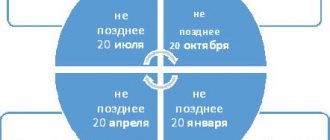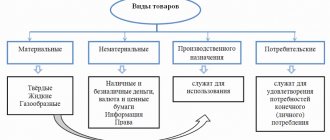Article about calculating property tax for individuals 2016.
Recently, individual taxpayers have been asking about property tax since 2015. Everyone wants to know what the property tax rate for individuals will be from 2015. In this regard, we decided to publish this article, however, in relation to property tax payers in the urban district of Dolgoprudny, Moscow region.
However, the calculation of personal property tax 2016 will be virtually the same for all Russians.
Many people will most likely want to know if there is a calculator for calculating property taxes for individuals? Yes, of course, it exists, but more on that a little later.
For those who are not particularly interested in changes in legislation, you can quickly jump to the link to the personal property tax calculator.
In accordance with Article 399 of the Tax Code of the Russian Federation, Chapter 32 of the Tax Code of the Russian Federation, the property tax for individuals is established by the Tax Code and regulatory legal acts of representative bodies of municipalities. At the same time, in cities of federal significance, such as Moscow, St. Petersburg and Sevastopol, this tax is established in addition to the Tax Code of the Russian Federation by the laws of the above-mentioned subjects.
In accordance with Article 400 and 401 of Chapter 32 of the Tax Code of the Russian Federation, taxpayers are individuals who own property that, in accordance with the Tax Code of the Russian Federation, is recognized as an object of taxation, I quote :
1. The following property located within a municipal formation (federal city of Moscow, St. Petersburg or Sevastopol) is recognized as the object of taxation: 1) residential building; 2) living space (apartment, room); 3) garage, parking place; 4) a single real estate complex; 5) an unfinished construction project; 6) other building, structure, structure, premises.
2. For the purposes of this chapter, residential buildings located on land plots provided for personal subsidiary farming, dacha farming, vegetable gardening, horticulture, and individual housing construction are classified as residential buildings.
3. Property included in the common property of an apartment building is not recognized as an object of taxation.
Tax rates when establishing taxes are determined by representative bodies of municipalities, such as the Council of Deputies of the city of Dolgoprudny, Moscow Region, independently, but within the limits and taking into account the specifics of Chapter 32 of the Tax Code of the Russian Federation. They are also authorized to establish tax benefits, including the basis and procedure for obtaining such benefits, not provided for by Chapter 32 of the Tax Code of the Russian Federation.
Taxpayers and objects of taxation
Taxpayers for the tax on individuals, as before, are recognized as individuals who have the right of ownership of property recognized as the object of taxation.
The object of taxation in accordance with Article 401 of the Tax Code of the Russian Federation is the following property located within a municipal formation (federal city of Moscow, St. Petersburg or Sevastopol):
- House;
- living space (apartment, room);
- garage, parking place;
- single real estate complex;
- unfinished construction project;
- other building, structure, structure, premises.
For the purposes of this chapter, residential buildings located on land plots provided for personal subsidiary plots, dacha farming, vegetable gardening, horticulture, and individual housing construction are classified as residential buildings .
Property included in the common property of an apartment building is not recognized
The objects of taxation do not include shares in the right of common ownership of property, as in Law No. 2003-1 of 09.12.1991. However, Article 408 of the Tax Code of the Russian Federation provides a mechanism for calculating tax on property that is in shared/common joint ownership.
If the object of taxation is in common shared ownership , the tax is calculated for each of the participants in shared ownership in proportion to his share in the ownership of such object of taxation.
If the object of taxation is in common joint ownership , the tax is calculated for each of the participants in joint ownership in equal shares .
Personal property tax calculator:
You can independently calculate the cost of property tax for individuals. But to make the calculation of the cost of property tax for individuals more accurate, we recommend contacting your tax inspector or using the calculator for calculating property tax for individuals on the website of the tax service; to use it, you just need to go to their resource (the website of the Federal Tax Service of Russia).
_________________________ Author of the article: private lawyer - Vitaly Alexandrovich Varakin.
The tax base
The tax base for taxable objects is determined based on their cadastral value. An exception to this rule are those objects for which have not been approved .
Objects included in the List of Real Estate, determined in accordance with paragraph 7 of Article 378.2 of the Tax Code of the Russian Federation*, are taxed at cadastral value.
*Such objects include:
- administrative and business centers and shopping centers (complexes) and premises in them;
- non-residential premises, the purpose of which, in accordance with the cadastral passports of real estate objects or documents of technical registration (inventory) of real estate objects, provides for the placement of offices, retail facilities, public catering facilities and consumer services, or which are actually used for the placement of offices, retail facilities, public catering facilities and household services service;
The procedure for determining the tax base can be established by regulatory legal acts of representative bodies of municipalities (laws of the federal cities of Moscow, St. Petersburg and Sevastopol) after the results of determining the cadastral value of real estate objects are approved by a subject of the Russian Federation in the prescribed manner.
The legislative (representative) body of state power of a constituent entity of the Russian Federation ( with the exception of Moscow, St. Petersburg and Sevastopol) establishes, before January 1, 2021, a single date for the start of application in the territory of this constituent entity of the Russian Federation of the procedure for determining the tax base based on the cadastral value.
The tax base is determined in relation to each taxable object as its cadastral value indicated in the state real estate cadastre as of January 1 of the year that is the tax period*.
*The tax period, as before, is the calendar year (Article 405 of the Tax Code of the Russian Federation).
In relation to an object formed during a tax period, the tax base in this tax period is determined as its cadastral value as of the date of registration of such an object for state cadastral registration.
Changes in cadastral value during a tax period are not taken into account when determining the tax base in this and previous tax periods, except for the following cases:
1. Changes in cadastral value due to the correction of a technical error made by the body carrying out state cadastral registration.
In this case, the new value is taken into account when determining the tax base starting from the tax period in which such a technical error was made.
2. Changes in cadastral value by decision of the commission for the consideration of disputes about the results of determining such value or by a court decision in the manner established by Article 24.18 of the Federal Law of July 29, 1998 No. 135-FZ.
Information about the cadastral value established by the decision of the said commission or a court decision is taken into account when determining the tax base starting from the tax period in which the corresponding application for revision of the cadastral value was submitted, but not earlier than the date of entry into the state real estate cadastre of the cadastral value that was the subject of the challenge.
The tax will be introduced by the constituent entities of the Russian Federation
To introduce a tax, each subject of the Russian Federation will have to: 1) determine the procedure for determining the cadastral value of property; 2) establish a single date from which in the territory of a constituent entity of the Russian Federation the tax base for the tax will be determined based on the cadastral value.
Until these procedures are implemented, the current procedure will be applied to calculate the tax. That is, the tax will be calculated based on the inventory value of the property (Article 402 of the Tax Code of the Russian Federation).
It should be taken into account that the constituent entities of the Russian Federation have the right to introduce a new procedure for calculating tax as early as January 1, 2015. However, to do this, they must adopt and publish the relevant regional law no later than December 1, 2014.
Tax base determined by cadastral value
The tax base for an apartment is determined as its cadastral value, reduced by the cadastral value of 20 square meters of the total area of this apartment.
The tax base for a room is determined as its cadastral value, reduced by the cadastral value of 10 square meters of the area of this room.
The tax base for a residential building is determined as its cadastral value, reduced by the cadastral value of 50 square meters of the total area of this residential building.
The tax base for a single real estate complex , which includes at least one residential premises (residential building), is determined as its cadastral value reduced by one million rubles .
Municipal authorities (government bodies of federal cities of Moscow, St. Petersburg and Sevastopol) have the right to increase the amount of tax deductions .
If, when applying tax deductions, the tax base takes a negative value, for the purpose of calculating tax, such tax base is taken equal to zero.
Note
Previously, it was planned to introduce a unified tax on real estate of individuals (buildings and land plots), which was also planned to be calculated from the cadastral value.
The Rosreestr website will help you find out the cadastral value of the required property. To do this, you can use the service “Reference information on real estate online” (https://rosreestr.ru/wps/portal/online_request), where you indicate the cadastral number or address of your apartment in the request form. Unfortunately, at the moment, this service does not work very correctly, so to determine the cadastral value of the required property, we recommend using the “State cadastral registration of real estate” section of the Rosreestr portal (https://rosreestr.ru/wps/portal/cc_ib_general_inf). Applications and documents for state cadastral registration of a real estate property can be provided by applicants in person at the places of reception of applicants of a territorial body or a multifunctional center for the provision of state or municipal services (MFC) at the location of the real estate property within the cadastral district, by mail to the postal address for reception applications and documents, as well as in the form of electronic documents using the Internet, including a single portal of state and municipal services.
Tax rates
Tax rates are established by legislative acts of municipal authorities (laws of Moscow, St. Petersburg and Sevastopol).
When determining the tax base based on cadastral value, tax rates are set in amounts not exceeding (clause 2 of Article 406 of the Tax Code of the Russian Federation):
1. 0.1% in relation to:
- residential buildings, residential premises;
- objects of unfinished construction if the designed purpose of such objects is a residential building;
- single real estate complexes, which include at least one residential premises (residential building);
- garages and parking spaces;
- economic buildings or structures, the area of each of which does not exceed 50 square meters and which are located on land plots provided for personal subsidiary farming, dacha farming, vegetable gardening, horticulture or individual housing construction;
2. 2% in relation to objects included in the list determined in accordance with clause 7 of Article 378.2 of the Tax Code of the Russian Federation, in relation to taxable objects provided for in paragraph two of clause 10 of Article 378.2 of the Tax Code of the Russian Federation, as well as in relation to objects of taxation, cadastral the cost of each of which exceeds 300 million rubles;
3. 0.5% in relation to other taxable items.
Tax rates of 0.1% and 2% can be reduced to zero or increased, but not more than three times. When determining the tax base by inventory value , tax rates are set on the basis of the total inventory value of objects multiplied by a deflator coefficient, within the following limits (clause 4 of Article 406 of the Tax Code of the Russian Federation):
The total inventory value of taxable objects, multiplied by a deflator coefficient ( taking into account the taxpayer’s share in the right of common ownership of each of such objects)
| The total inventory value of taxable objects, multiplied by a deflator coefficient ( taking into account the taxpayer’s share in the right of common ownership of each of such objects) | Tax rate |
| Up to 300,000 rubles inclusive | Up to 0.1 % inclusive |
| Over 300,000 to 500,000 rubles inclusive | Over 0.1 to 0.3 % inclusive |
| Over 500,000 rubles | Over 0.3 to 2.0 % inclusive |
It is allowed to establish differentiated tax rates depending on:
1) the cadastral value of the taxable object (inventory value taking into account the coefficient);
2) type of taxable object;
3) location of the taxable object;
4) types of territorial zones within the boundaries of which the taxable object is located.
If tax rates are not determined by the regulations of municipalities (laws of Moscow, St. Petersburg and Sevastopol), taxation is carried out:
1) in the case of determining the base by cadastral value - at the rates specified in clause 2 of Article 406 of the Tax Code of the Russian Federation;
2) in the case of determining the base by inventory value:
- at a rate of 0.1% in relation to objects with an inventory value multiplied by a deflator coefficient (taking into account the taxpayer’s share in the common ownership of each of such objects), up to 500,000 rubles inclusive,
- at a rate of 0.3% in relation to other objects.
How to calculate property tax yourself?
In order to approximately calculate the property tax of your real estate yourself, you need to know the cadastral value of your real estate and multiply it by your tax rate, example :
The cadastral value of the apartment is 5'500'000 (five and a half million) rubles.
The total area of the apartment is 60 square meters.
According to the Decision of the Council of Deputies of the city of Dolgoprudny MO dated November 19, 2014 N 24-nr “On the property tax of individuals in the territory of the Dolgoprudny urban district of the Moscow region,” property does not exceed 300 million rubles, thereby the tax rate is 0.1 (zero point one tenth) percent of the cadastral value.
Therefore, we get the following:
1) 5’500’000/60=91’666,67
The cadastral value of one square meter was 91,666.67 rubles.
2) 91666,67*20=1’833’333,40
The cadastral value of twenty square meters was 1,833,333.40 rubles.
3) 5’500’000-1’833’333,40=3’666’666,60
The tax base in accordance with paragraph 3 of Article 403 of the Tax Code of the Russian Federation is 3,666,666.60 rubles.
4) 3’666’666,60*0,1%=3’666,67
Total for the tax period, i.e. for 12 months, the tax on an apartment with a total area of 60 square meters will be 3,666.67 rubles.
As for the real estate tax of an individual who owns more than one apartment, no discounts are provided and the tax is paid in full for each apartment. But at the same time, if the owner has a benefit, then, at the owner’s choice, he can apply for a property tax benefit for one of, say, two apartments. In addition, if the owner of the apartment is not one, but suppose two individuals, and they own the apartment as common shared ownership or have the right to a share of common shared ownership, then the tax will be calculated based on this share.
It is worth noting that payment of property tax from individuals is calculated from the cadastral value, which does not correspond to the actual value, i.e. below the market value or much higher than the market value, then this circumstance can be challenged in court.







